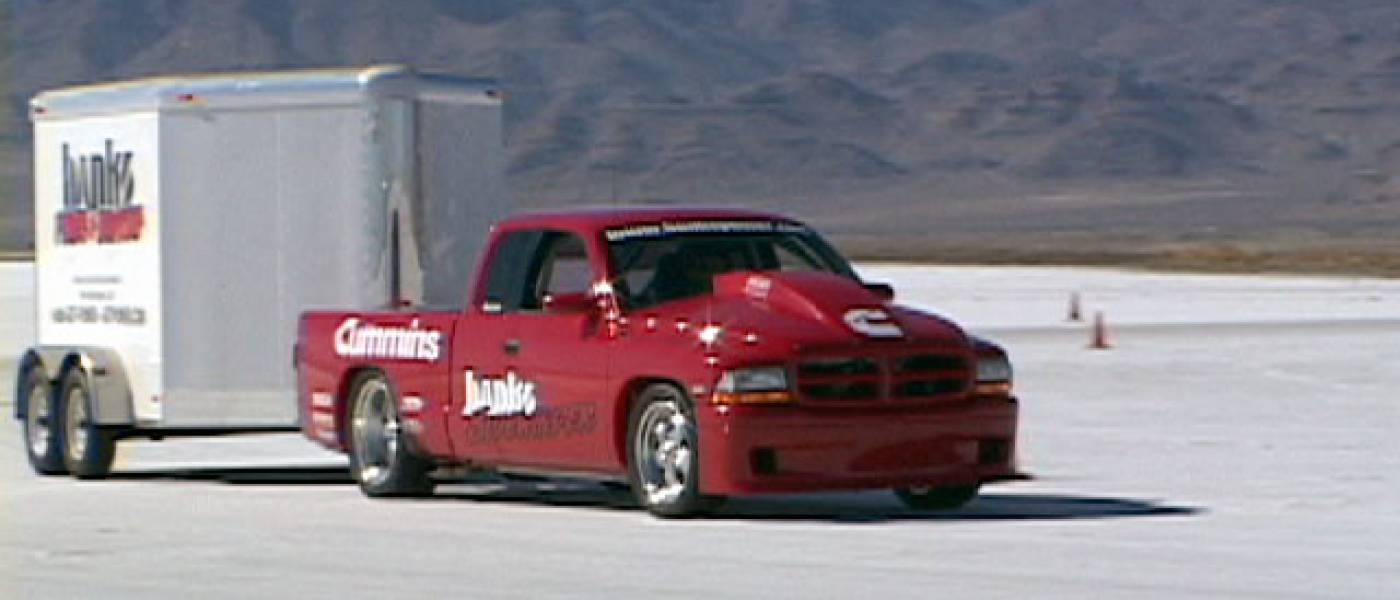Customer Q&A #5 (with Peter Treydte, Banks’ Director of Technical Communications)
QUESTION #5:
You didn’t directly answer some of my questions, but if I read between the lines, it would appear that there would be no benefit to me to add your upgraded intercooler, (I bought the Six-Gun, etc. to tow 15,500 lbs) because the transmission and drivetrain may not take the power of a level 4 or 5 while heavy towing and climbing. Did I understand this correctly?
ANSWER #5:
The durability of the vehicle’s engine and transmission can be directly affected by how and when power is applied. In reality, it doesn’t matter how much power is available on tap, what is critical is how much of the power is applied at specific times. The Ford TorqueShift transmission is a heavy-duty unit that is capable of handling all the power that the Six-Gun is capable of dishing out, but this depends on a few other issues. I like to think in terms of load on the transmission. For instance, more power from the engine places a greater load on the transmission. More vehicle weight, more load. Steeper grade, more load. The transmission (and the rear axle) are capable of handling a certain amount of load, but there is always a way to exceed the limits. For instance, if I were to hitch up a 30,000 lb trailer (exceeding Ford’s specifications) and tackle a long 10% grade at full speed, even with the engine producing a stock amount of power, I will likely exceed the transmission’s capabilities and cause a failure. But if I were to reduce my speed (which means that I am applying less of the power that is available) I could probably complete the climb without causing damage. Similarly, if weight was reduced or the grade was not as steep, the chances of avoiding damage will increase.
Transmission life is mostly related to the condition of the clutches (including the torque converter clutch). The clutches are most susceptible to damage during shifts, which occur during the acceleration of the vehicle. The greater the load on the transmission during shifts, the more potential there is for clutch wear as a result of slippage. Because we cannot control the driving style of individual users, we recommend that you do not exceed Level 3 while towing (greater load) in order to prevent the possibility of causing slippage in the transmission. We determined this based on our testing, which involves loading a vehicle to its maximum rated weight, and evaluating under full throttle conditions. In reality, a prudent driver could easily use the vehicle in a level higher than 3 and simply modulate his use of the power such that the transmission would not be subjected to extreme loads during shifts. We must be somewhat ambiguous and conservative as we describe these conditions because we have no way of knowing how a vehicle will be used, how much load will be placed on the transmission, or what the user’s driving style will be.
A separate subject is the engine’s ability to withstand EGT. As I have already discussed, your Six-Gun is equipped with a thermocouple which gives it the feature of limiting fuel delivery based on EGT. This limit is set at 1350° for all levels except 6, which is a “racing only” limit of 1500°. (Incidentally, these limits are tunable with the use of a Banks iQ.) Therefore, from the standpoint of EGT alone, any level except for 6 could be considered appropriate for towing. But there are a few things that affect EGT. Higher power levels on the Six-Gun add fuel more rapidly than the lower levels, which will cause EGT to rise faster. This is not necessarily a bad thing, but it does increase the overall heat profile of the engine. More dramatic is the effect that airflow improvements have on EGT. When I say airflow, what I am really referring to is the air density that is delivered to the cylinders of the engine. The greater the density of the air in the cylinders, the cooler the EGT’s will be, therefore more fuel can be injected and more power can be used within the same EGT limit. A better than stock intercooler is an excellent way to increase air density. Our Techni-Cooler with High-Ram inlet casting increases air density by about 10%, which basically has the same effect as increasing the displacement of the engine by that amount. An added benefit is that the all-aluminum construction of the intercooler is much more durable than the plastic tank design of the stock intercooler. We have seen many failures of the stock intercooler even without added fueling. So to answer your specific question about the benefit of the intercooler, my opinion is that the Banks Techni-Cooler would be a huge benefit to you, mostly because you will be towing a heavy load. You will be able to take advantage of the power potential that the Six-Gun has to offer with less possibility of the fuel being limited by EGT because you will have more air density contributing to a lower EGT.

